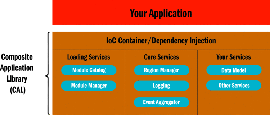The new MSDN Magazine is out and Shawn Wildermuth's article on creating composite Silverlight applications using Prism is finally available. If you're building large scale Silverlight applications and need to learn how to compose pieces of your application together, go read the article!

In this article, I show you how to build an application using the composition techniques of the Composite Application Library from the Prism project. The example I develop is a simple editor of database data.